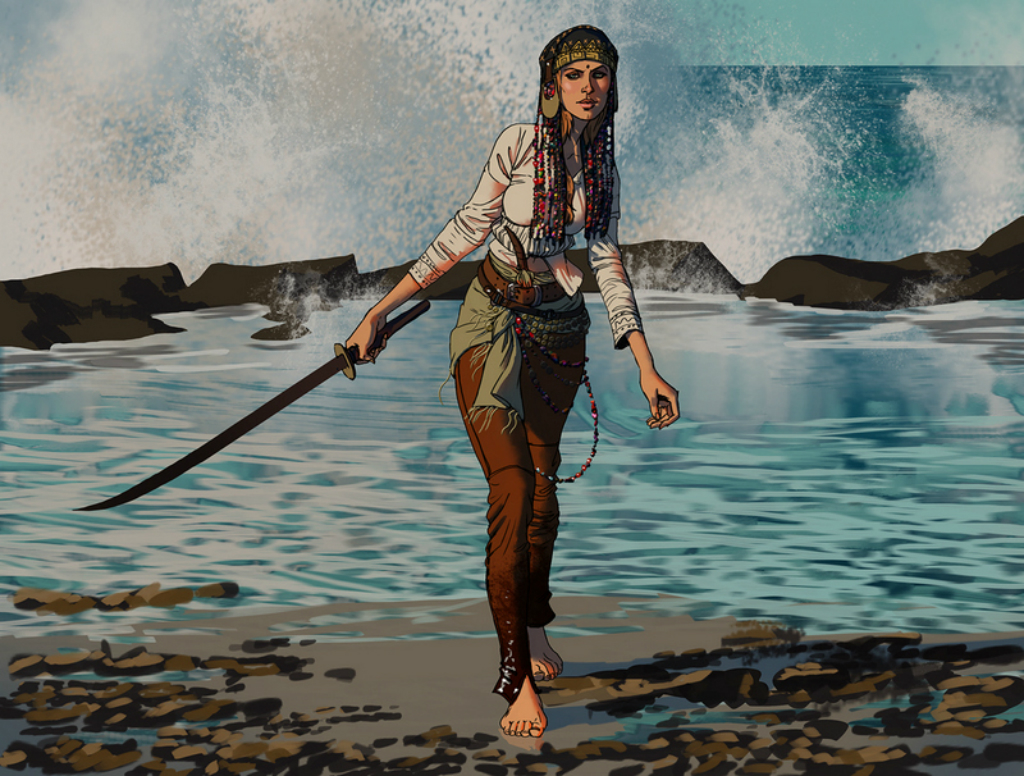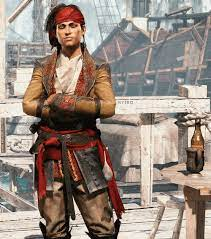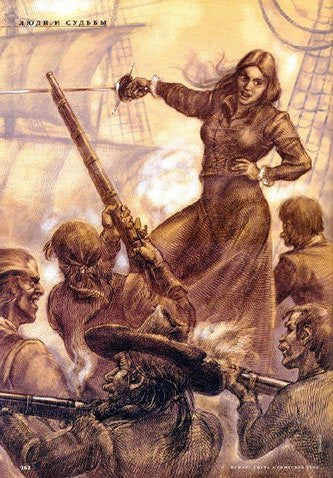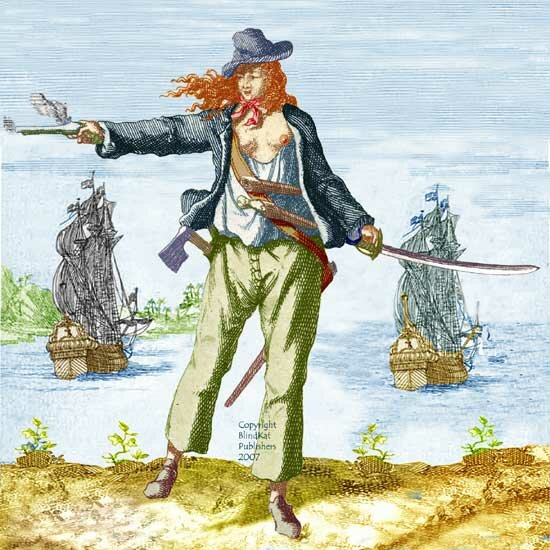The 5 Most Famous Female Pirates in History
Throughout history, pirates have been a notorious threat to the seas. In the past, women were prohibited from traveling because they believed their presence would anger water-glorifying gods, leading to dangerous weather conditions.
Sailors held the belief that women were a distraction to male sailors on long journeys. Furthermore, women in the maritime industry often kept their involvement hidden or illegal.
Although some pirates may be viewed as heroic swashbucklers, the reality is that most are individuals who have turned to piracy as a means of survival.
Queen Teuta of Illyria

The Teuta ruled in the 3rd century CE as queen of the Ardiaeis. After the death of King Agron of Ardias, Teuta reigned. Her followers favored her During ancient times, Teuta was involved in the theft and attack of Greek and Roman shipbuilding and coastal settlements. She even refused the king's offer of help at sea. As a result, she was later convicted. In 229 BC, Rome engaged in a battle against The Ardiaeis, which lasted for two years until their surrender.
Jeanne de Clisson

During the first half of the century, there was a noblewoman from Brittany named Jeanne de Clisson who valiantly defended the French navy by raiding ships. Later, she switched sides and protected the English army. When she was tried for treason and executed, she once again switched sides and fought against the English, raiding French castles and stealing goods and military ships. Legend has it that Clisson was given three warships painted in black. For 13 years, she plundered French ships, but her brutal reputation has left few surviving witnesses. She was given the title "Lightsey of Britain."
Mary Read
Mary Read, who was born in 1685, is renowned for being one of the most notorious pirates of the Golden Age of Piracy.

To join the British forces, Mary disguised herself as an old man. She ended up marrying Flemish troops who were aware of her secrets and later found herself in a state of destitution. While sailing away from the coast of Jamaica, Mary's ship was attacked by pirates. She seized the opportunity to showcase her skills in front of them in hopes of escaping poverty and was accepted as a member of their crew. Ben discusses the development of the Mosquito Coast in 1880 and sheds light on the lives of pirates and smugglers. He also reflects on the way British society abandoned the region.
Grace O'Malley

Learn about the remarkable Grace O'Malley (1530-1643), an Irish pirate who played a crucial role in defending her lands against hostile Irish forces and the British government. Her father, an officer, trained her to sail the seas, and she continued her seafaring ways after his death. Grace even gave birth to her first child while at sea. With the British occupying Ireland, she built essential coastal defenses for her homeland. In September 1595, Queen Elizabeth and Grace met at Greenwich Castle. They collaborated to create a Latin treaty. Discover more about this fascinating historical figure.
Anne Bonny

Born in March 1697, Anne Bonny was the illegitimate daughter of renowned attorney William Cormac and his servant Mary Brennan, hailing from Ireland. At the age of five, Anne moved with her father to London before eventually settling in the Carolina Province. As an adult, she married a poor sailor by the name of Jack Bonn and the two traveled together to Nassau, a Caribbean haven for pirates. It was there that Anne met Calico Jack Rackham, whom she married and joined on a crew of men disguised as a man. Despite their alleged crimes, Anne, Rackham, and their lover were arrested in 1720.
Democracy among Caribbean pirates
Contrary to the Western society of the time Caribbean pirates of Europe-related descent worked as small democracy. Pirate communities were among the early adopters of introducing checks and balance systems similar to today's democratic structures and institutions. It was alleged that this government sailed on a Pirate Sloop in the seventeenth century.
Who is the most famous female pirate?
Meet Anne Bonny, a formidable pirate who is widely regarded as the most skilled female pirate of the Golden Age. It is said that she fought with greater skill than any male crew member onboard a ship.
Who was the most brutal female pirate?
There was a woman named Jaccite who found herself in a dire situation and ended up joining a group of pirates. She eventually became the leader of their ship before it was wrecked. She was known for her striking red hair and her ability to survive numerous dangerous situations, making her a legendary figure in the eyes of many.
Who was the first female pirate in history?
Many consider Rachell Hall to be America's first female pirate. She was born in Philadelphia, Pennsylvania in 1760. At the age of 16, she married George Wall and the couple eventually settled in Boston, where they worked as maids and fishermen.
Frequently Asked Questions
How to Learn from the Mistakes and Victories of Human History.
You don't need to wait for history repeats itself. It takes very little time to learn from the mistakes made by human history. Be sure to not repeat the mistakes!
Recognize the lessons from the past to help you build your business.
This can be done by reading books about leadership and management strategies, as well as case studies from successful companies that have existed for decades.
You can learn from their successes and avoid the pitfalls they fell into.
Also, you can find examples of bankrupt businesses. Why did they fail. Is there a common theme among these failures. These insights will allow you to avoid costly errors.
Finally, you will find information about some of the most famous historical figures, such as Abraham Lincoln or John D. Rockefeller. They had some of the most impressive resumes in the world, yet none knew how to manage people or run a company. If you want to learn from the mistakes they made, it is important to understand why.
Learning from human history's mistakes and victories is simple. Simply spend a few seconds each day reflecting on the successes and failures of the past to find ways to use them today.
Who first said that people who don't learn history from the past are stupid?
While we all would love to live in an ideal world that everyone learns from past mistakes, it is not possible to learn from our own mistakes.
It's not better to try something wrong than to learn how to do it right.
The only real mistake is not trying to ensure you do it right the first time.
As long as you keep making changes, you'll eventually find out why you made the change in the first place.
You may even find that you could do it better the second time.
This doesn't necessarily mean that you should stop trying. You've learned a lot.
Even though you cannot avoid making mistakes completely, you can minimize them. This is the difference that makes the difference of success and failure.
It all starts with acknowledging your mistakes. Next, look at your mistakes objectively and ask yourself "What have I learned?"
Being honest with yourself will help you see that your mistakes are only lessons. They're learning experiences that can help you grow.
Thomas Edison was the victim of this fate. He failed many times before he finally invented the light bulb.
He didn't let his failures discourage him. Instead, he took each failure as an opportunity and improved his design.
Over time, he created the most popular type of lighting available today.
So, if you fail, don't get discouraged. Learn from your mistakes. You should learn from your mistakes.
Then, try again.
What can we learn from history to avoid repeating past errors?
Because we make the same mistakes over and over again, history repeats itself. We don't learn from our mistakes. We don't change. We become complacent. We settle for mediocrity.
History repeats itself because we believe the same old stories. We live in a world where we've been conditioned to believe that there are fixed truths and immutable laws. These laws are unchangeable and we have no control over them.
This prevents us thinking critically. From questioning authority. By challenging assumptions. And when we don't question, we don't grow. When we don't learn, we stagnate. When we stagnate we make the same mistakes again and again.
History doesn't repeat itself, because we continue to make the same mistakes. History repeats itself because we refuse to learn from our mistakes and instead continue to make the same ones over and over.
You can end the cycle of history repetition by changing the way that you view the world. By understanding that nothing is permanent, you can see the possibilities. Nothing is unchangeable. Everything is constantly changing.
To break the cycle, embrace uncertainty. Accepting the possibility of things going wrong. To accept the possibility of failure. Accept that failure may be possible.
Accept that you may not achieve your goals. Accept that you may not achieve your goals. However, it is important to keep working towards improving.
To hold on to the past is to be certain. If you insist on the existence of fixed truths, then you will never move forward.
You must let go if you want to be free. If you want progress, you need to let go of control.
What do our mistakes teach us?
You can learn from your mistakes. That means you'll learn something. However, it is possible to correct a mistake. You don't have to worry about the small things. There's nothing wrong in making mistakes. We all make them.
It's okay to feel embarrassed about a mistake. However, it doesn't really matter if you feel ashamed. It's the way you deal with your mistakes which matters most. You will let your mistakes bother you. But if you view them as opportunities for growth, you'll come out stronger on the other side.
Recognize your mistake and move on. You don't need to dwell on it. Instead, you should focus on the next step. Keep moving.
Don't dwell on your mistakes. Instead, find ways to improve. Learn from your failures and make improvements for tomorrow.
Successful Inventions Made from Accident
Inventors make mistakes. How we deal with those mistakes is what determines whether our inventions succeed or fail.
The fact is there are no accidents when it comes to invention. Every invention was done intentionally. There are no accidental inventions.
An invention is a deliberate act. An intention to create something. A solution to a problem. A solution that improves the quality of life.
To be successful inventing is to understand that nothing happens by chance. Instead of trying to avoid making mistakes, learn from them.
We would love to tell you that invention is simple, but it's not. It takes hard work and perseverance to invent something. It's not a quick fix. It takes time.
That means that you will have to spend much time thinking about issues and new ideas. What is it that people are most concerned about? What do they need?
You have to ask yourself questions like these. These questions will help determine what product or service you should create next.
This requires you to let go of any preconceived notions. Preconceived notions about what the world needs or wants are not valid. You have to listen carefully to your customers and potential customers.
Learn what they really want. Not what they tell you they want.
Once you've figured out what they want, you have to devise a way to give it to them. Here's where invention really begins.
Statistics
- The classic clown stylings we know today have specific origins, according to u/Bodark34. (lifehacker.com)
- For example, your chance of survival might go from 10% to 30% in some zones. (lifehacker.com)
- According to Smithsonian, mailing young James Beagle through postage cost only 15 cents, although his parents paid him $50. (medium.com)
- It is estimated that more than 400,000 workers died; some are said to be buried in the long wall. (knownepal.net)
- According to the Washington Post, Coming back to babies' mailing, the most extended trip taken by a “mailed” child happened to be in 1915. (medium.com)
External Links
nytimes.com
en.wikipedia.org
theguardian.com
- Black British history - The dispute over England's school syllabus
- Bill Gates donates $4.6bn in largest gift to charity since 2000
youtube.com
How To
The Suez Canal Changed the World
Ferdinand de Lesseps was the man who built the Suez Canal. His goal was to connect Europe with Asia. To do so, he needed to build a canal across the Isthmus of Suez (the narrowest point), allowing ships from Europe to reach India and China. This process required building a series of locks and dams along the way. He made several trips to Egypt, where he negotiated with the Khedive Ismail Pasha to finance the project. He returned to France and found that Napoleon III was dead. The Second Empire had taken over the project. It took him three more years before the French government approved funding the project. After the defeat of the British at the Battle for Omdurman in the Sudan War, 1859, the British signed a treaty that allowed them to access the Red Sea via Suez Canal. This was opened in 1869.
This project helped open up trade routes and increase international commerce, leading to the development of many countries around the globe, including Canada, Australia, New Zealand, Japan, Russia, South Africa, and the United States.
The Suez Canal also allowed people to travel faster than ever before. It used to take weeks or months for people to cross the Isthmian Peninsula before it was constructed. Now it takes just days. People could visit places like Paris, London, Rome, and Constantinople without going through long sea voyages and dangerous storms. The Suez Canal also reduced the distance between North America, Europe and almost 3,000 miles, making it much easier to travel back and forth. These features made the Suez Canal a major transportation project.
But the Suez Canal was also problematic because it divided up the Ottoman Empire, which eventually led to World War I. During the war, the British used the Suez Canal to attack Germany, but the Germans attacked Britain using their version of the canal. Although the Suez Canal passed under Egyptian control following the end the war, both the British and Egyptians still held the land.
After the Second World War, the Suez Canal remained an important part of global trade until the Arab-Israeli conflict began in 1948. At first, both sides did not want to act against each other, fearing the other side might use force. Israel took over the Sinai peninsula of Egypt from Egypt in 1967. In that year, all shipping except military vessels was prohibited from the Suez Canal. The canal was closed for four years before President Sadat opened it to civilian traffic in 1973.
Did you miss our previous article...
https://lessonsbeyondthestory.com/videos/harrowing-footage-of-the-chernobyl-disaster-ourhistory-chernobyl-documentary






